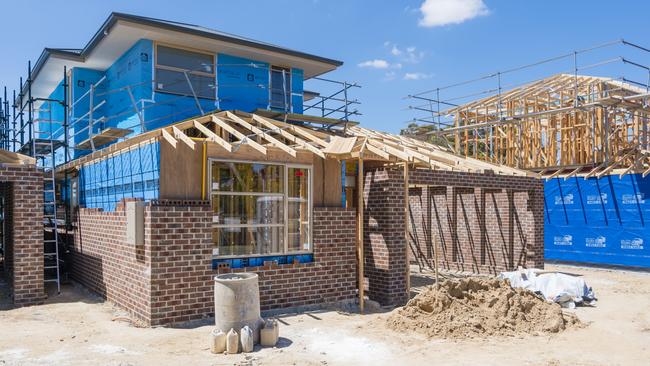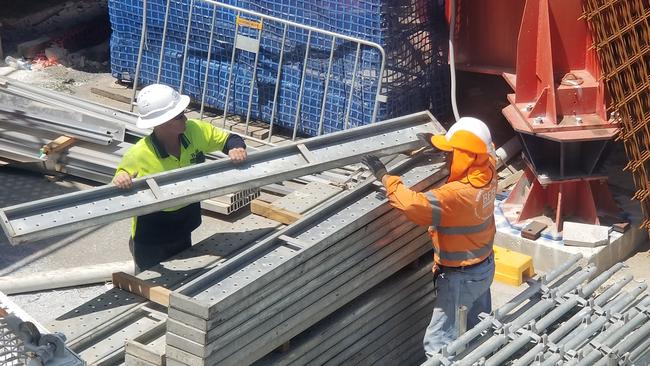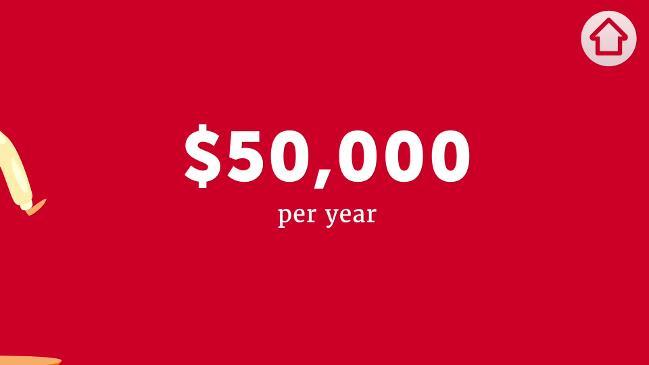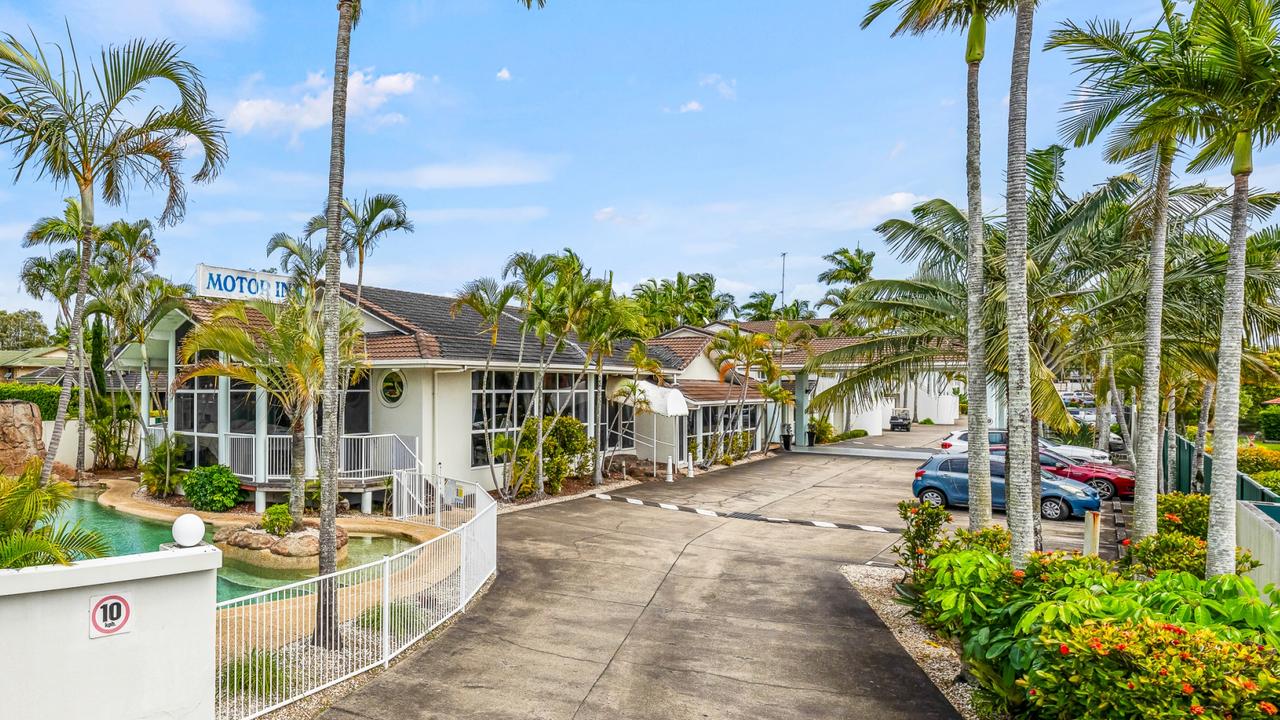Hope for residential rebound as building costs start to stabilise
The cost of building a home in Queensland jumped 20 per cent in the past year, but experts hope we’ll soon see prices dip. Here’s why.

Property
Don't miss out on the headlines from Property. Followed categories will be added to My News.
The cost of building a home in Queensland jumped 20 per cent in the past year, but experts hope to see better results before year end as reductions in material price surges filter through the industry.
Latest Australian Bureau of Statistics data showed interest rate disenchantment and the high cost of building delivered an -18.8 per cent slump in house approvals across the state in the 12 months to the end of January, but those for units and apartments bounced back, up 8 per cent in that period.
Master Builders Queensland chief executive Paul Bidwell said the cost of building a house should begin to stabilise as input costs and inflation reduce.
“It’s up 20 per cent, though the ABS is telling us 18,” he said. “The sense is that if we can get through 2023 things might stabilise further.”

MORE: How a $2 investment could earn you $78,000 each year
Lite N Easy diet king sheds hefty hinterland estate
Say hello to Frank Walker’s magnificent Toorak pad
Turner & Townsend senior economist Tiffany Emmett said anyone looking for a builder should see some improvement over the next 12 to 24 months as new house construction activity slowed.
“With fewer people building new homes during tougher economic conditions, we are likely to see builders have more capacity to take on new work.”
ABS producer price index data shows residential construction input costs were beginning to ease, going from a near 50-year high – when it peaked at a 17.3 per cent rise in FY2021/22 – to a more moderate 14 per cent increase across 2022.
Housing Industry Association senior economist Tom Devitt said structural timber and reinforcing steel prices, which were the first prices to surge during the pandemic, logged dramatic price falls towards the second half of last year.
“Other products have been under more pressure recently, for example, terracotta tiles, insulation, timber windows and doors, plywood and board, metal garage doors,” he said.

“But the overriding trend is that materials are becoming less of a constraint on home building, relative to labour which is now the number one constraint.”
Ms Emmett said many other challenges experienced during the pandemic continued to plague the construction sector including labour shortages.
“There is a vast pipeline of construction work to get underway across the region and this will continue to keep pressure on the market. While some softening in new house building will help to improve some of these conditions, it could also mean that some trades and skills are lost to other sectors where activity is set to grow.”
“We have also seen an increase in builder insolvencies, which no doubt is having an impact on the pool of available labour and subcontractors in the market.”
Both HIA and Master Builders Queensland support significant labour streamlines being put in place for construction, including allowing for more overseas workers to fill construction skills gaps.

HIA chief economist Tim Reardon warned “the RBA isn’t going to return the economy to stability by putting the building industry through boom-and-bust cycles”.
He said the interest rate environment was not helping, with the state’s new home sales now “exceptionally low”, down -51.2 per cent in the three months to February compared to the same period the previous year.
“Tighter access to finance and a higher cash rate is seeing many new home buyers withdraw from the market. Customers that received approval to build a new home early in 2022 are cancelling these projects as the cost-of-living bites and banks withdraw financing,” he said.
Mr Bidwell said the sector did not need any additional hurdles, including new building code regulations they were “battling” the state government over.
He warned the regulations would add up to $30,000 to the cost of a new house at a time when only Victora was following suit.

“They’re going to make matters worse,” Mr Bidwell said. “The National Construction Code is really like the bible for building including provisions related to accessibility and energy efficiency. We say this shifting to seven star energy efficiency is going to add $20,000 typically to the cost of a new home and about $8,000 for the accessibility provisions.”
Mr Bidwell said the state government had already admitted conditions were not ideal for extra costs – given it allowed a two-year delay in new project trust account rules that would have added “a couple of percentage points” to building costs.
“We’d (also) like to see some concessions (for new building code changes) given the current environment,” he said. “The other states have, we would say sensibly, agreed to prolong that introduction. That’s something the Queensland government has got direct control over.”

Real Estate Institute of Queensland head Antonia Mercorella said the government was under pressure to start delivering concrete ways to ease unprecedented housing and rental shortfalls at its follow up to the Housing Summit next week.
“We need the politics to be put to one side. We need some sincerity and genuine effort by all three levels of government to solve this problem. We can’t keep being reactive. We’ve got to do a better job of recognising that our population is growing, particularly here in Queensland.”
She said community aversion to suburban development also “played a role in bringing us to where we are today”.
“If we’re lucky enough to own a property we want to protect its value. So NIMBY-ism arises – not in my backyard mentality,” she said. “The reality is a lot of people out there aren’t in a position to afford a house, and units are cheaper than a freestanding home. We’ve got to recognise that we probably are going to see more apartments and units, particularly in metropolitan areas.”
“We know that land is scarce. We know people want to be connected to services and amenities. Building up is something we need to start embracing.”
FOLLOW SOPHIE FOSTER ON TWITTER
More Coverage





